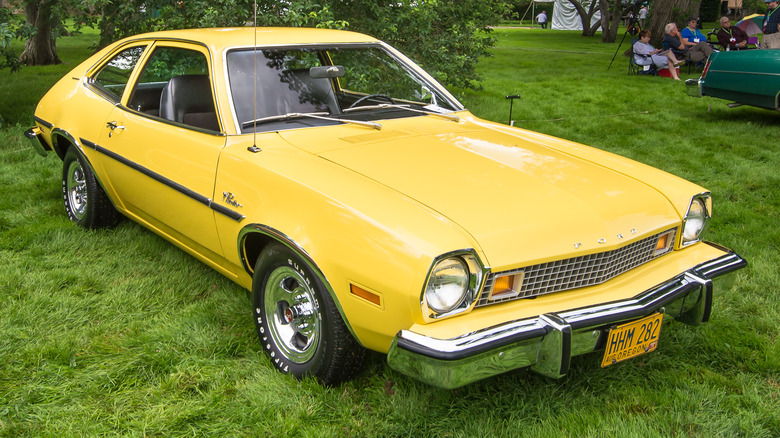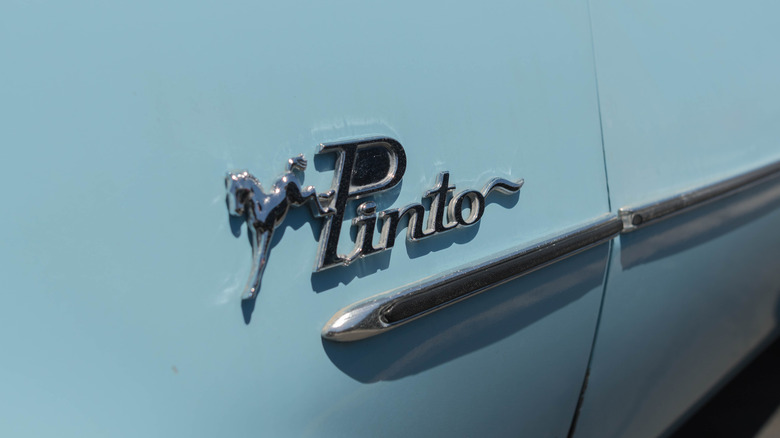The Real Reason Ford Pintos Used To Explode
The history of auto manufacturing in the United States is filled with hits and misses. Some cars and trucks are so popular and sought-after that they remain in production for decades: the Charger, the Mustang, the F-150. However, just as many are confined to the dustbins of history: the DeLorean, the Edsel, the Pontiac Aztek.
The are just as many reasons for these failures as there are models that failed to take off. Some of the vehicles, such as the Aztek, were just too ugly for the U.S. market, as Motor Trend explains. In the case of the DeLorean, it was an overpriced car that no one wanted, according to CNN.
However, one automotive failure extends beyond consumers merely failing to get behind the product. The story involves death and dismemberment. So gruesome are the injuries associated with the Ford Pinto that, according to Auto Repair Review, some believe the whole thing is an urban legend. In fact, Pintos did explode, in the lab and on the road, and drivers were killed and maimed by them.
A minor and inexpensive fix would have prevented the Ford Pinto explosions
The Ford Motor Company rushed the subcompact-sized Pinto through production, according to The American Museum of Tort Law. Even though Ford was aware of possible explosions involving the fuel tank, the company was keen to get the model on the road, and cheaply. It would prove to be a fatal decision: Before long, reports of passengers being killed or maimed when the fuel tank exploded — after minor, low-speed collisions — started flooding in. When the dust had settled, Ford had paid out tens of millions in damages and recalled 1.5 million of the vehicles, as The New York Times reported in 1978.
The reason for the model's propensity to burst into flames when rear-ended rested in a design flaw of the exhaust system, according to Auto Repair Review. Specifically, even a low-speed collision could cause a rupture in the filler neck, allowing fuel to spill out and be exposed. Further, the vehicle was designed in such a way that exposed metal would then be able to produce sparks, igniting a fire that would cause the fuel tank to explode.
Ford eventually developed an aftermarket fix for the vehicles, according to Hagerty Media, but the damage had been done, and today the Pinto serves as a reminder of the shortcomings of the U.S. auto industry.

